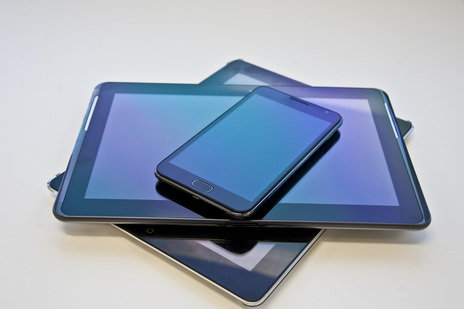
iReflect: Mobile Reflection for Learning
Harvey, M (1)., Reyna, J (1)., Baker, M (2)., Fredericks, V (1).,
Hamilton, J (1)., Lloyd, K (3)., McLachlan, K (4)., Semple, A( 5).,
Smith, S (6)., Walkerden, G (7).
(1) Learning and Teaching Centre
(2) Faculty of Arts
(3) Department of Environment and Geography
(4) Faculty of Human Sciences
(5) Participation and Community Engagement
(6) School of Advanced Medicine
(7) Department of Geography and Planning
Macquarie University
Introduction
Journaling, or maintaining a diary, is the most common mode of documentation for reflective practice (Clarke & Burgess, 2009). Text and cognitive based reflective practice by students can be supported in face to face delivery mode, during any teaching session. The challenge is how to support, even scaffold, student reflective practice for distant and blended delivery modes. Off-campus learning presents one of the more challenging modes of delivery for supporting student learning through reflection (Harvey. et.al, unpublished research) and this challenge is exacerbated when students are learning through their placement experience in remote areas that lack, or have unreliable, internet access. An all-in-one mobile app that enables documentation as text, images, audio, video or drawing has the potential to foster reflective practice within our students. The app needs to enable uploading to iShare (Macquarie University repository platform), allow for push notifications to scaffold reflection and work offline. This project will research, refine and authentically pilot such an app.
Harvey, M (1)., Reyna, J (1)., Baker, M (2)., Fredericks, V (1).,
Hamilton, J (1)., Lloyd, K (3)., McLachlan, K (4)., Semple, A( 5).,
Smith, S (6)., Walkerden, G (7).
(1) Learning and Teaching Centre
(2) Faculty of Arts
(3) Department of Environment and Geography
(4) Faculty of Human Sciences
(5) Participation and Community Engagement
(6) School of Advanced Medicine
(7) Department of Geography and Planning
Macquarie University
Introduction
Journaling, or maintaining a diary, is the most common mode of documentation for reflective practice (Clarke & Burgess, 2009). Text and cognitive based reflective practice by students can be supported in face to face delivery mode, during any teaching session. The challenge is how to support, even scaffold, student reflective practice for distant and blended delivery modes. Off-campus learning presents one of the more challenging modes of delivery for supporting student learning through reflection (Harvey. et.al, unpublished research) and this challenge is exacerbated when students are learning through their placement experience in remote areas that lack, or have unreliable, internet access. An all-in-one mobile app that enables documentation as text, images, audio, video or drawing has the potential to foster reflective practice within our students. The app needs to enable uploading to iShare (Macquarie University repository platform), allow for push notifications to scaffold reflection and work offline. This project will research, refine and authentically pilot such an app.

Aims of the study
This project aims to work towards the development of a technological scaffold for reflective practice, namely a mobile app that can be used by students to document for reflective practice both on- and off-line.
The outcomes for the iReflect project include:
• Establishment of a multi-disciplinary, Community of Practice of distributed leaders, focusing on mobile technology for documentation of practice.
• Researching the needs of reflective learners to identify their ‘user stories’ for an app.
• Extending the foundational work of an available Macquarie University mobile platform (PocketStudio) to develop an app with the features that will support mobile reflective practice and learning.
• Co-generation of a user interface design that is intuitive and accessible.
• Testing and piloting the functionality and usability of the app in authentic contexts.
Literature review
Mobile learning has been identified as a ‘technology to watch’ (Johnson, et al. 2013) as it can be economic, flexible, and portable. In particular mobile learning provides access to mobile apps which ‘enable learners to share their questions or findings with each other in real-time. Students can leverage the cameras, microphones, and other tools inherent in mobiles to do field work or create rich media. This is especially convenient for work done outside of the classroom as students can record interviews, collect data for experiments, and more’(p.7). Students in higher education are using these smart mobile technologies to support their learning (Murphy, Farley & Koronios, 2013). In contrast there exists some reticence, or restriction, in higher educational institutions and their ‘use of new, innovative technologies’ (Marinagi, Skourlas & Belsis, 2013). One approach suggested to bridge this gap is to create learning environments that support students using their own devices, ‘student-led technology provision’ (Gosper, Malfroy & McKenzie, 2013, 279).
The research specifically investigating the role of mobile apps in supporting learning, or reflection for learning, is however limited. Researchers are starting to argue the potential of mobile apps as they allow ‘anywhere-anytime’ postings (Kanis, Brinkman & Perry, 2009) and the capturing of videos for later reflection by teachers (Aubusson, Schuck & Burden, 2009).
A review of currently available apps has identified only one app that directly supports reflection for learning, the “R app” developed by Maastricht University, designed for use inside the Maastricht university network. While it allows capturing of data in several modes, it is limited as it does not have functions such as use offline in areas where Wi-Fi is not available, drawing, uploading to a database. There is a need to develop an app that supports diverse modes of documentation for reflection, both on and off campus.
This project aims to work towards the development of a technological scaffold for reflective practice, namely a mobile app that can be used by students to document for reflective practice both on- and off-line.
The outcomes for the iReflect project include:
• Establishment of a multi-disciplinary, Community of Practice of distributed leaders, focusing on mobile technology for documentation of practice.
• Researching the needs of reflective learners to identify their ‘user stories’ for an app.
• Extending the foundational work of an available Macquarie University mobile platform (PocketStudio) to develop an app with the features that will support mobile reflective practice and learning.
• Co-generation of a user interface design that is intuitive and accessible.
• Testing and piloting the functionality and usability of the app in authentic contexts.
Literature review
Mobile learning has been identified as a ‘technology to watch’ (Johnson, et al. 2013) as it can be economic, flexible, and portable. In particular mobile learning provides access to mobile apps which ‘enable learners to share their questions or findings with each other in real-time. Students can leverage the cameras, microphones, and other tools inherent in mobiles to do field work or create rich media. This is especially convenient for work done outside of the classroom as students can record interviews, collect data for experiments, and more’(p.7). Students in higher education are using these smart mobile technologies to support their learning (Murphy, Farley & Koronios, 2013). In contrast there exists some reticence, or restriction, in higher educational institutions and their ‘use of new, innovative technologies’ (Marinagi, Skourlas & Belsis, 2013). One approach suggested to bridge this gap is to create learning environments that support students using their own devices, ‘student-led technology provision’ (Gosper, Malfroy & McKenzie, 2013, 279).
The research specifically investigating the role of mobile apps in supporting learning, or reflection for learning, is however limited. Researchers are starting to argue the potential of mobile apps as they allow ‘anywhere-anytime’ postings (Kanis, Brinkman & Perry, 2009) and the capturing of videos for later reflection by teachers (Aubusson, Schuck & Burden, 2009).
A review of currently available apps has identified only one app that directly supports reflection for learning, the “R app” developed by Maastricht University, designed for use inside the Maastricht university network. While it allows capturing of data in several modes, it is limited as it does not have functions such as use offline in areas where Wi-Fi is not available, drawing, uploading to a database. There is a need to develop an app that supports diverse modes of documentation for reflection, both on and off campus.

Approach
The iReflect project will be underpinned by both Participatory Action Research (PAR)
and Distributed Leadership. A PAR approach (Kemmis, McTaggart & Nixon, 2014)
aligns with the project’s needs as it provides for collegiality, building in both research and evaluation and a flexibility to adapt as project requirements shift (Harvey, 2013). All participants will be enabled as leaders of learning and teaching, through a distributed model of leadership, an approach that increases sustainability of leadership capacity (Jones, Harvey, Lefoe & Ryland, 2014). The focus will be on developing the leadership capability of all project team members recognising that each brings strengths to the project and, collaboratively, will build strengths. This opportunity will be extended to the merit scholar. This approach is also a project risk management strategy, as leadership is shared enabling the project to progress regardless of whom is leading at each stage.
Work in progress
The project has been granted funding from Macquarie University Enhancement Program (2014-2015). The first step is to research the needs of reflective learners by identifying their ‘user stories’ for the app. This may involve different disciplines and could be achieved through online surveys (Qualtrics) and student focus groups. For this purpose, an undergraduate research scholar will be hired. The scholar will draft up an ethics application, recruit and then facilitate the student focus groups. Next the scholar will have responsibility for analysing and interpreting the data collected and then presenting the research findings to the project team. The outcome of the ‘user stories’ will help design the look and feel of the app and its functionality. Then a first prototype to be tested will be deployed to refine the app.
References
Aubusson, P., Schuck, S., & Burden, K. (2009). Mobile learning for teacher professional learning: benefits, obstacles and issues. Alt-J, 17(3), 233– 247. doi:10.1080/09687760903247641
Clarke, D. & Burgess, C. (2009). Using practice based education to improve the student experience. In The Student Experience: Proceedings of the 32nd HERDSA Annual Conference, Darwin, 6-9 July 2009, (pp.73-80). Milperra, Australia: Higher Education Research and Development Society of Australasia, Inc.
Gosper, M., Malfroy, J. & McKenzie, J. (2013). Students’ experiences and expectations of technologies: An
Australian study designed to inform planning and development decisions. Australasian Journal of Educational Technology, 29(2), 268-282.
Harvey, M. (2013) So you think you are doing action research? Indicators of enactment of participatory action research in higher education. ALARj (Action Learning and Action Research Journal), 19 (1), 115-134.
Johnson, L., Adams Becker, S., Cummins, M., Freeman, A., Ifenthaler, D., and Vardaxis, N. (2013). Technology Outlook for Australian Tertiary Education 2013-2018: An NMC Horizon Project Regional Analysis. Austin, Texas: The New Media Consortium.
Jones, S., Harvey, M., Lefoe, G. & Ryland, K. (2014). Synthesising theory and practice: distributed leadership in higher education, Educational Management Administration and Leadership. doi:10.1177/1741143213510506
Kanis, M., Brinkman, W.-P., & Perry, M. (2009). Designing for positive disclosure: What do you like today? International Journal of Industrial Ergonomics, 39(3), 564–572. doi:10.1016/j.ergon.2008.10.001
Kemis, S., McTaggart, R. & Nixon, R. (2014). The action research planner. Doing critical participatory action research. Springer: Singapore.
Marinagi, C., Skourlas, C. & Belsis, P, (2013). Employing ubiquitous computing devices and technologies in
the higher education classroom of the future. Proceedings of the 2nd International Conference on Integrated Information (IC-ININFO 2012), Budapest, Hungary, August 30 – September 3, 2012. Procedia – Social and Behavioral Sciences, 73, 487-494.
Murphy, A., Farley, H. & Koronios, A. (2013). Understanding the use of smart mobile technology for learning
in higher education. Paper presented at the 2013 Electric Dream, 30th ascilite conference, 1-4 December, Sydney. http://www.ascilite.org.au/conferences/sydney13/program/papers/Murphy.pdf
The iReflect project will be underpinned by both Participatory Action Research (PAR)
and Distributed Leadership. A PAR approach (Kemmis, McTaggart & Nixon, 2014)
aligns with the project’s needs as it provides for collegiality, building in both research and evaluation and a flexibility to adapt as project requirements shift (Harvey, 2013). All participants will be enabled as leaders of learning and teaching, through a distributed model of leadership, an approach that increases sustainability of leadership capacity (Jones, Harvey, Lefoe & Ryland, 2014). The focus will be on developing the leadership capability of all project team members recognising that each brings strengths to the project and, collaboratively, will build strengths. This opportunity will be extended to the merit scholar. This approach is also a project risk management strategy, as leadership is shared enabling the project to progress regardless of whom is leading at each stage.
Work in progress
The project has been granted funding from Macquarie University Enhancement Program (2014-2015). The first step is to research the needs of reflective learners by identifying their ‘user stories’ for the app. This may involve different disciplines and could be achieved through online surveys (Qualtrics) and student focus groups. For this purpose, an undergraduate research scholar will be hired. The scholar will draft up an ethics application, recruit and then facilitate the student focus groups. Next the scholar will have responsibility for analysing and interpreting the data collected and then presenting the research findings to the project team. The outcome of the ‘user stories’ will help design the look and feel of the app and its functionality. Then a first prototype to be tested will be deployed to refine the app.
References
Aubusson, P., Schuck, S., & Burden, K. (2009). Mobile learning for teacher professional learning: benefits, obstacles and issues. Alt-J, 17(3), 233– 247. doi:10.1080/09687760903247641
Clarke, D. & Burgess, C. (2009). Using practice based education to improve the student experience. In The Student Experience: Proceedings of the 32nd HERDSA Annual Conference, Darwin, 6-9 July 2009, (pp.73-80). Milperra, Australia: Higher Education Research and Development Society of Australasia, Inc.
Gosper, M., Malfroy, J. & McKenzie, J. (2013). Students’ experiences and expectations of technologies: An
Australian study designed to inform planning and development decisions. Australasian Journal of Educational Technology, 29(2), 268-282.
Harvey, M. (2013) So you think you are doing action research? Indicators of enactment of participatory action research in higher education. ALARj (Action Learning and Action Research Journal), 19 (1), 115-134.
Johnson, L., Adams Becker, S., Cummins, M., Freeman, A., Ifenthaler, D., and Vardaxis, N. (2013). Technology Outlook for Australian Tertiary Education 2013-2018: An NMC Horizon Project Regional Analysis. Austin, Texas: The New Media Consortium.
Jones, S., Harvey, M., Lefoe, G. & Ryland, K. (2014). Synthesising theory and practice: distributed leadership in higher education, Educational Management Administration and Leadership. doi:10.1177/1741143213510506
Kanis, M., Brinkman, W.-P., & Perry, M. (2009). Designing for positive disclosure: What do you like today? International Journal of Industrial Ergonomics, 39(3), 564–572. doi:10.1016/j.ergon.2008.10.001
Kemis, S., McTaggart, R. & Nixon, R. (2014). The action research planner. Doing critical participatory action research. Springer: Singapore.
Marinagi, C., Skourlas, C. & Belsis, P, (2013). Employing ubiquitous computing devices and technologies in
the higher education classroom of the future. Proceedings of the 2nd International Conference on Integrated Information (IC-ININFO 2012), Budapest, Hungary, August 30 – September 3, 2012. Procedia – Social and Behavioral Sciences, 73, 487-494.
Murphy, A., Farley, H. & Koronios, A. (2013). Understanding the use of smart mobile technology for learning
in higher education. Paper presented at the 2013 Electric Dream, 30th ascilite conference, 1-4 December, Sydney. http://www.ascilite.org.au/conferences/sydney13/program/papers/Murphy.pdf

